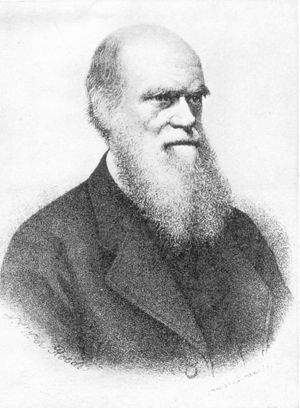 |
| Charles Darwin (1809-1882) (Wikipedia) |
Kathy Fernandez opened the meeting today to talk about 21st century learners: she says that students are used to immediate feedback, media rich environments, and instant access to information and data. We can be skeptical about online learning, but as instuctors, we should be curious and willing to explore. We have new tools and approaches. Students are used to a high level of engagement. Our eAcademy is a way to create a learning community (this is phase 2 of the eAcademy). There are professional learning communities coming out of the eAcademys. We are here to explore, connect, and engage with one another. Common topics on Course Redesign includes: quality online teaching and learning aligning outcomes with assessment.
Gerry says that he does not want to have this be a top down project from the Chancellor's office. He wants this to arise from this faculty community. He wants us to be skeptical - we have to look at the evidence and real measures.
CSU wants to increase on achievement and graduation rates. We need to use course redesign but also analytics. Kathy Fernandez says that we gather over 200 mb of data in our ag research on cows but gather very little data on our students. The CSU wants to use live data sources for decision making. Learning analytics covers activity in a course LMS, gathering real-time data every 24 hours, to provide a quicker
"Learning analytics is the measurement, collection, analysis and reporting of data about learners and their contexts, for purposes of understanding and optimising learning and the environments in which it occurs." - George Siemens.
Kathy then shared a case study on a team taught intro to religion course that was converted to a hybrid course. The course had over 370 students. There was a 10 percent increase in students getting higher than a C, but there was also an increase in students who got F's. They then used data from the LMS and then demographic data from PeopleSoft. The tools they used were Excel, Tableau, Stata, IBM spss, and R. Blackboard and Moodle (Martin Dougiamas) are working on other tools. They found that final grade and LMS use were significant factors. Things like "first in the family to go to college" was less significant than use of the LMS for the grade. "At risk" students was not a significant factor.
Micheal: Accessing an LMS is a learning activity, simply being something isn't.
But at-risk students had to work harder to get the same grade. It is harder to get a B as an under-represented minority and Pell elgible student.
The question for us is: How do we reach these students?
She talked about Blackboard learning analytics. The CSU has a STEM grant for student analytics. We need analytics tools for all of our LMSs. Analytics tools will show us how they are engaging in the course.
We had a discussion about whether students are ready for online learning and how to prepare them.
We then discussed how to communicate with at-risk students.
For Moodle - there is a program called "X-Ray Research" SRL. It creates a data dashboard.

No comments:
Post a Comment